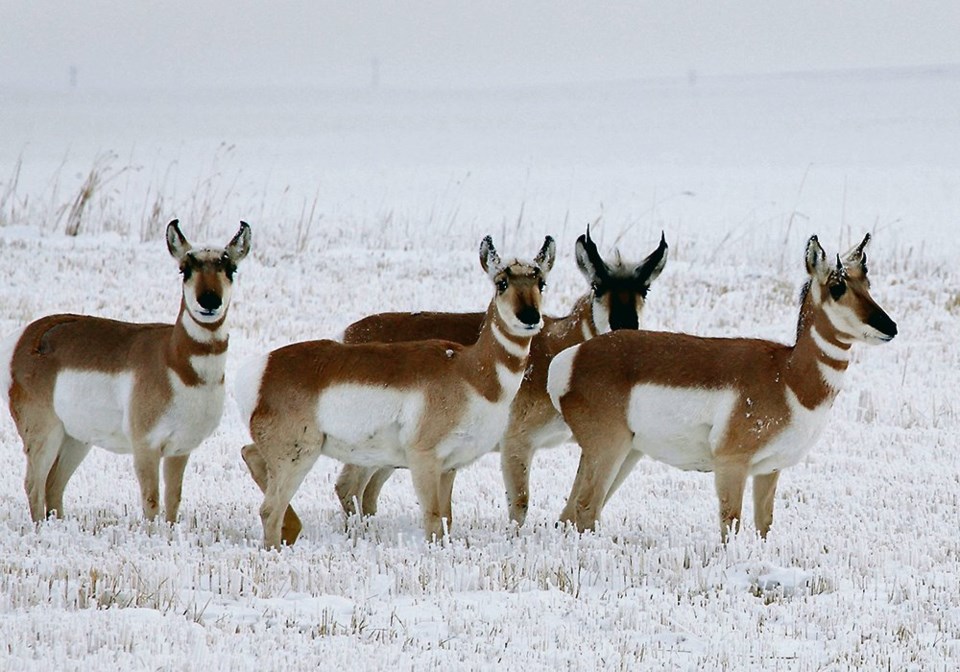Now, conservationists are trying to make that journey safer. They have developed a short list of sites on which to build wildlife overpasses, after more than three years of collected data from the public, according to Paul Jones, Alberta Conservation Association wildlife biologist.
“There are eight for Alberta — three of them on the highway that goes north from Suffield from the Trans-Canada (Highway 884) and the other five are on the east side of Medicine Hat,” he said, adding those will be narrowed down to one to start.
A partnership of conservationist groups developed the phone app Wildlife Xing for the public to report animals they see along the highway that was launched in late 2017 and has since seen a wealth of data collected.
For the pronghorn, that information has been centred on the main pathways taken by the animal across the Trans-Canada between Brooks, Alta., and Swift Current, Sask.
Jones said that information from citizen scientists is consistent with migratory path models of the pronghorn developed by the University of Calgary’s Andrew Jakes, which were based on GPS-collared animals that tracked the paths the pronghorn took during spring and fall.
“It’s pinpointing where potential mitigations could happen and we’re seeing more strong alignments between the citizen science data and Dr. Jakes’ models and animal collision data from Alberta Transportation,” said Jones.
Collectively, those data points are contributing to a wider knowledge of just how far pronghorn herds move in any given year.
“That’s what we’re starting to understand across North America is these long-distance migrations and how imperilled they are,” said Jones. “When we have these major winters and they can’t move south to escape the severe conditions, that’s when we see big mortality and we see populations decline.”
Jones said if more isn’t done to improve connectivity of rangeland used by the pronghorn, it could threaten the population.
One issue lies in the problems pronghorns face during years of large and long-lasting snow, in which the animals struggle to reach the forage beneath the snow.
Historically, there is evidence that issue was traditionally overcome with pronghorn following bison herds, who would trample down large portions of the snow-covered prairie to allow access to grazing.
While the pronghorn have adapted, a bad winter can still have deadly impacts.
The winter of 2009-10 saw a severe decrease in the pronghorn population due to the amount of snow that blanketed the main corridor used by the animals, driving them into city centres like Medicine Hat. That caused dozens of pronghorn fatalities due to them eating poisonous domestic garden shrubs, as well as vehicle collisions. Last winter’s heavy snow saw a Canadian Pacific Railway train plow into a herd standing on the tracks, killing dozens of pronghorn along the tracks near Maple Creek, Sask.
“The pronghorn get on the tracks and their defence is speed and they think they can outrun trains and they quickly learn they can’t,” Jones said.
“Looking at the larger landscape, if you were to put in mitigation across Highway 1, you’d also have to consider the train tracks as well because they parallel the highway.”
Building wildlife overpasses won’t be inexpensive, however.
“They’re not cheap when you put overpasses in,” said Jones. “You want to do the science to make sure you can narrow down to the right spot. Then it will be looking for potential funding sources.”
Jones said a report on the information gathered from the Wildlife Xing app will be complete before the end of the year. From there, further analysis of the shortlisted sites for a possible overpass will be undertaken.

